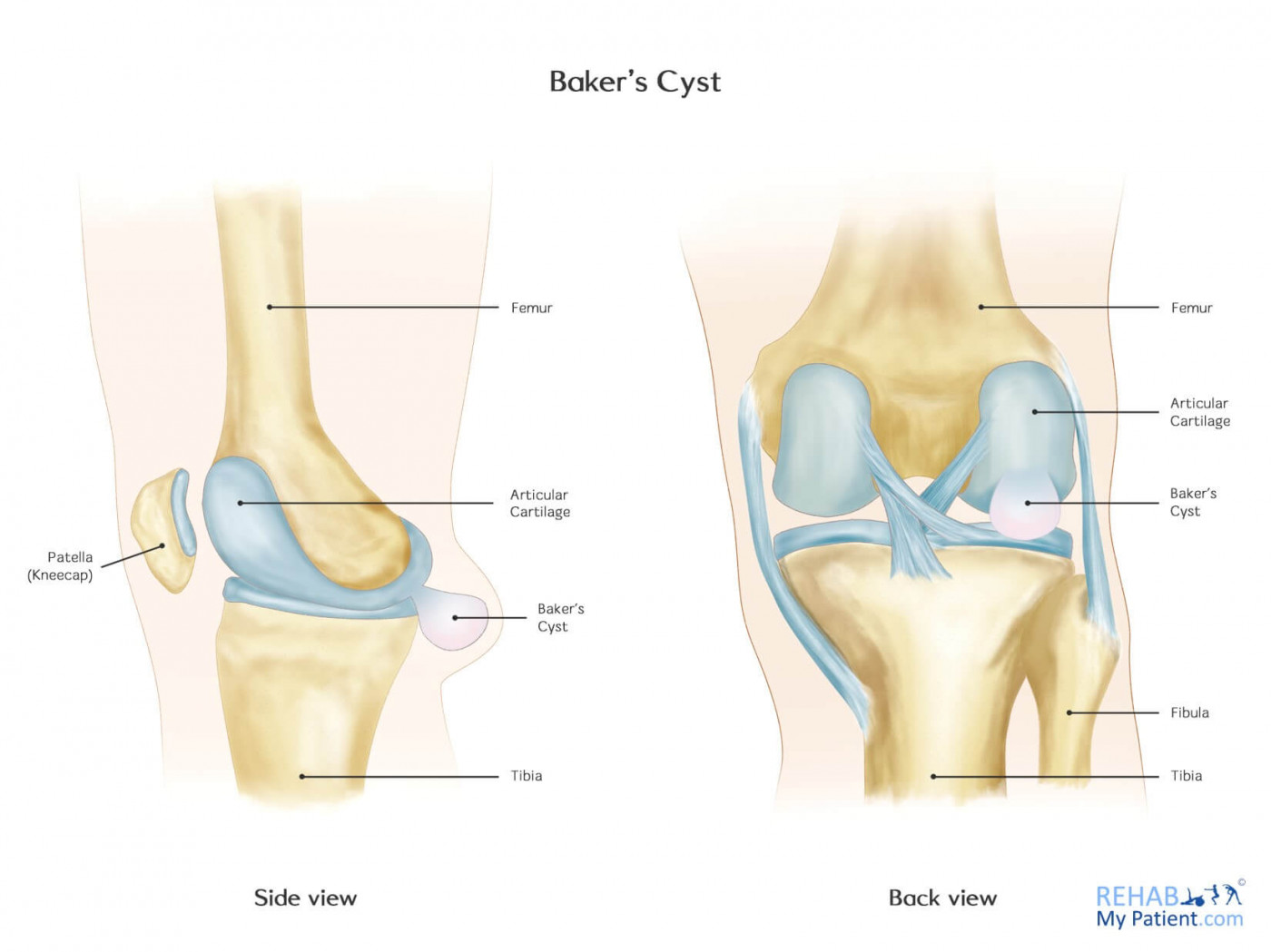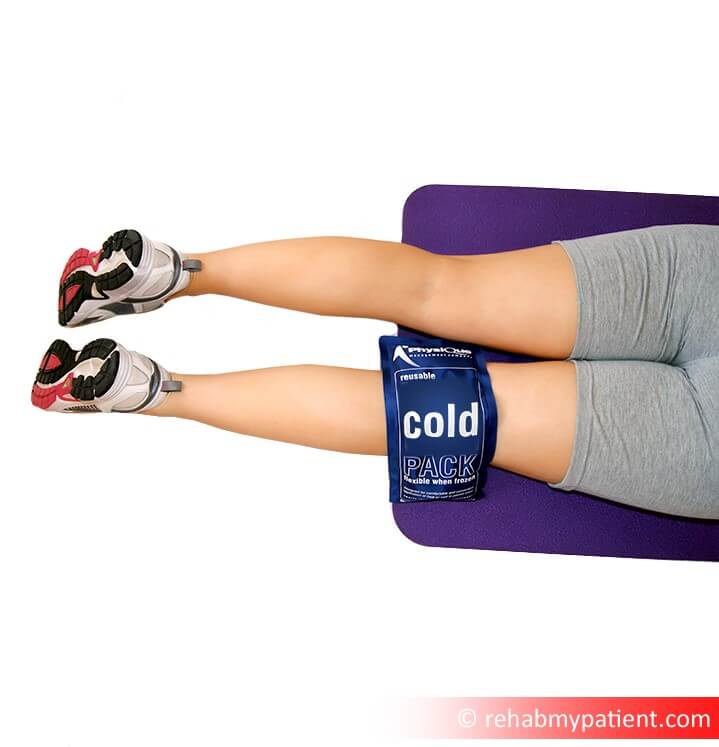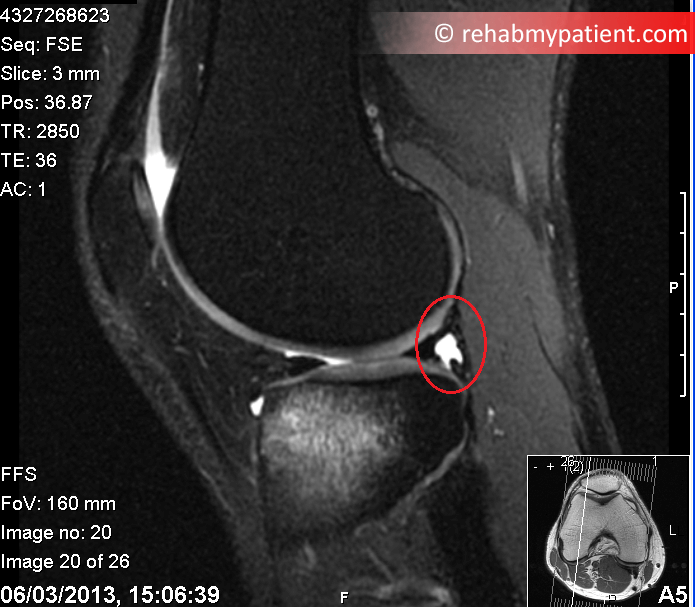Baker's Cyst
Posted on 09th Aug 2017 / Published in: Knee

A Baker Cyst is swelling that is caused from fluid coming from the knee joint that protrudes to the back of the knee. When an abundance of fluid in the knee joint is compressed from the weight of the body between the knee joint's bones, it becomes trapped and ends up separating from the joint to eventually form a sac filled with fluid.
Baker's Cyst Anatomy
Cysts are lined sacs that have fluid in them. They form around the joints due to a bulging in the joint capsule. Baker's cysts develop from the capsule in the knee joint. It ends up protruding into the tissues at the back of the knee. A baker’s cyst can be felt as a soft swelling in the back of knee. Four bones come together to make up the knee joint: kneecap (patella), thighbone (femur), thick bone at the front of the lower part of the leg (tibia) and the thin bone in the side of the lower part of the leg (fibula).
A baker’s cyst is sometimes also known as a popliteal bursitis, or less commonly as a popliteal cyst. Popliteal refers to the muscle next to it (called popliteus) and a bursitis is an inflamed sac filled with fluid.
A baker’s cyst will often form secondary to some other injury to the knee, for example, a torn ligament or meniscus. They also commonly occur following knee surgery.
A baker’s cyst is best identified on an MRI, and it appears as a swollen sac of fluid.

How to treat Baker's Cyst:
- Anti-Inflammatory Medications
Typical medications to alleviate pain are Ibuprofen, Naproxen, Ketoprofen and Calcoxib. Thanks to the anti-inflammatory properties in the medications, the swelling will be reduced to help minimize the amount of pressure felt in the knee joint.
- Ice
Ice is one of the best things to treat a baker’s cyst. Remember that this is simply an inflammation, or swelling, so use ice to reduce the swelling. Be persistent with it, as it can take 2-4 weeks of regular icing (try 5-10 minutes, 3 times per day) to reduce the swelling.

- Physical Therapy
Undergoing physical therapy can help to reduce swelling in the knee. Leg strengthening exercises can work wonders to help get the fluid moving away from your knee and start alleviating the pressure and fluid build-up. Electrotherapy such as ultrasound, LASER and acupuncture can also help reduce the swelling. Therapy also improves mobility to the knee joint which can reduce swelling.
- Surgery to Remove the Cyst
If all else fails, surgery is an option, but a rarely used option. As the baker’s cyst is often secondary to another knee injury, sometimes surgery to the causative injury can help. When internal knee problems and cartilage tears are found, surgery can be the best alternative. The surgeon may remove the swollen tissue leading to the formation of the cyst. Arthroscopic surgery (keyhole) is performed.
- Cortisone Injections
Sometimes a Baker's Cyst may be resolved with removal of the excess fluid from around the knee. To do this, a cortisone injection is often used and it may or may not be accompanied with a drainage process. Draining the fluid is often enough to alleviate the cyst and aid in the recovery process. Since the treatment quickly reduces inflammation, pain relief is soon to follow. However, there are some important blood vessels at the back of the knee which need to be avoided, and is a common reason why some doctors choose not to inject.

An MRI showing a small Baker’s cyst
Tips:
- Resting your legs frequently throughout the day will help to alleviate inflammation and prevent additional strain on the knee.
- While resting, apply some ice to the back of your knee to reduce inflammation.
- Elevation can be helpful so try to elevate your leg when sitting for a period of 3-4 weeks.
- When standing for extended periods of time, compression stockings around the knee will make sure the blood is properly flowing.
- Avoid any excess aerobics, jogging or weightlifting until the cyst is completely healed. Even though many people recommend exercise as a means to treat the cyst, you don’t want to overdo it and cause undue strain to the area.
- If your body is able to bounce back quickly from an injury and get the rest it needs, there is a chance the cyst will go away on its own without additional treatment.
Sign UP
Sign up for your free trial now!
Get started with Rehab My Patient today and revolutionize your exercise prescription process for effective rehabilitation.
Start Your 14-Day Free Trial